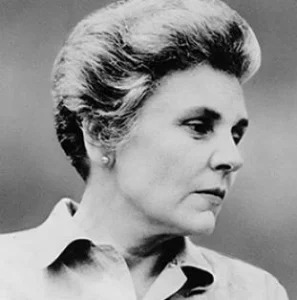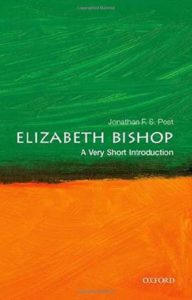A very short — but insightful and informative – introduction to poet Elizabeth Bishop
Elizabeth Bishop (1911-1979) fits the oft-believed stereotype of the writer or artist who becomes more famous after her death than during her life. She has a towering reputation today as one of the finest American poets of the 20th century, though she had a total of just 90 poems (or 101, according to other sources) published during her lifetime.
As professor and author Jonathan Post points out in Elizabeth Bishop: A Very Short Introduction, her timing for fame — like the sense of timing in her poetry — was perfect. The end of her life occurred as feminism was going mainstream in American culture. It also helped that her poetry was approachable — you didn’t need a college degree to read and enjoy it, as Post says, calling her poetry “casually perfect.”

Elizabeth Bishop
During her lifetime, Bishop published four short collections of poetry: North and South (1946); Poems: North & South / A Cold Spring (1955), which won the Pulitzer Prize; The Complete Poems (1970), which won the National Book Award; and Geography III (1976). For 15 years after her death, her literary reputation was relatively unchanged.
Then came the publication of a large group of her letters in 1994; a collection of her paintings in 1996; a collection of unpublished and unfinished poems (Edgar Allan Poe & the Juke-Box) in 2006; and a complete collection of her letters to and from poet Robert Lowell in 2008. The Bishop-Lowell letters were the basis of a play and later a movie with Meryl Streep and Kevin Kline. In 2011 came the publication of her letters with The New Yorker, followed that same year by numerous letters to her psychoanalyst. And other films and even a novel have been published about her life and writings.

In 2009, I read The Complete Poems: 1927-1979. It had been a long time since I read her poetry, and it was like finding a new poet. You can read the complete text of one of those poems, “The Riverman,” here at Tweetspeak Poetry.

Jonathan Post
Post received his A.B. degree from Amherst in 1970 and his Ph.D. degree from the University of Rochester in 1976. He taught at Yale in the late 1970s and then joined the English Department at UCLA, where he served as both department chair and Dean of Humanities. He is currently a distinguished research professor at UCLA. He has published several books and articles on Shakespeare, Milton, the Metaphysical poets, lyric poetry in the 17th century, and contemporary poetry.
Oxford University Press started the Very Short Introductions series in 1995 and now has published hundreds of titles. Post previously write A Very Short Introduction to William Shakespeare for the series.
A Very Short Introduction to Elizabeth Bishop does an excellent job of introducing the reader to both the poet and her poetry. In a short volume, Post offers deep insights into Bishop, the times she lived in and the times that came after her death that affected our contemporary understanding of her poetry.
Photo by Ivan Radic, Creative Commons, via Flickr. Post by Glynn Young.
How to Read a Poem uses images like the mouse, the hive, the switch (from the Billy Collins poem)—to guide readers into new ways of understanding poems. Anthology included.
“I require all our incoming poetry students—in the MFA I direct—to buy and read this book.”
—Jeanetta Calhoun Mish
- Poets and Poems: Forrest Gander and “Mojave Ghost” - March 27, 2025
- Poets and Poems: Siân Killingsworth and “Hiraeth” - March 25, 2025
- Poets and Poems: Donna Hilbert and “Gravity” - March 20, 2025


Leave a Reply